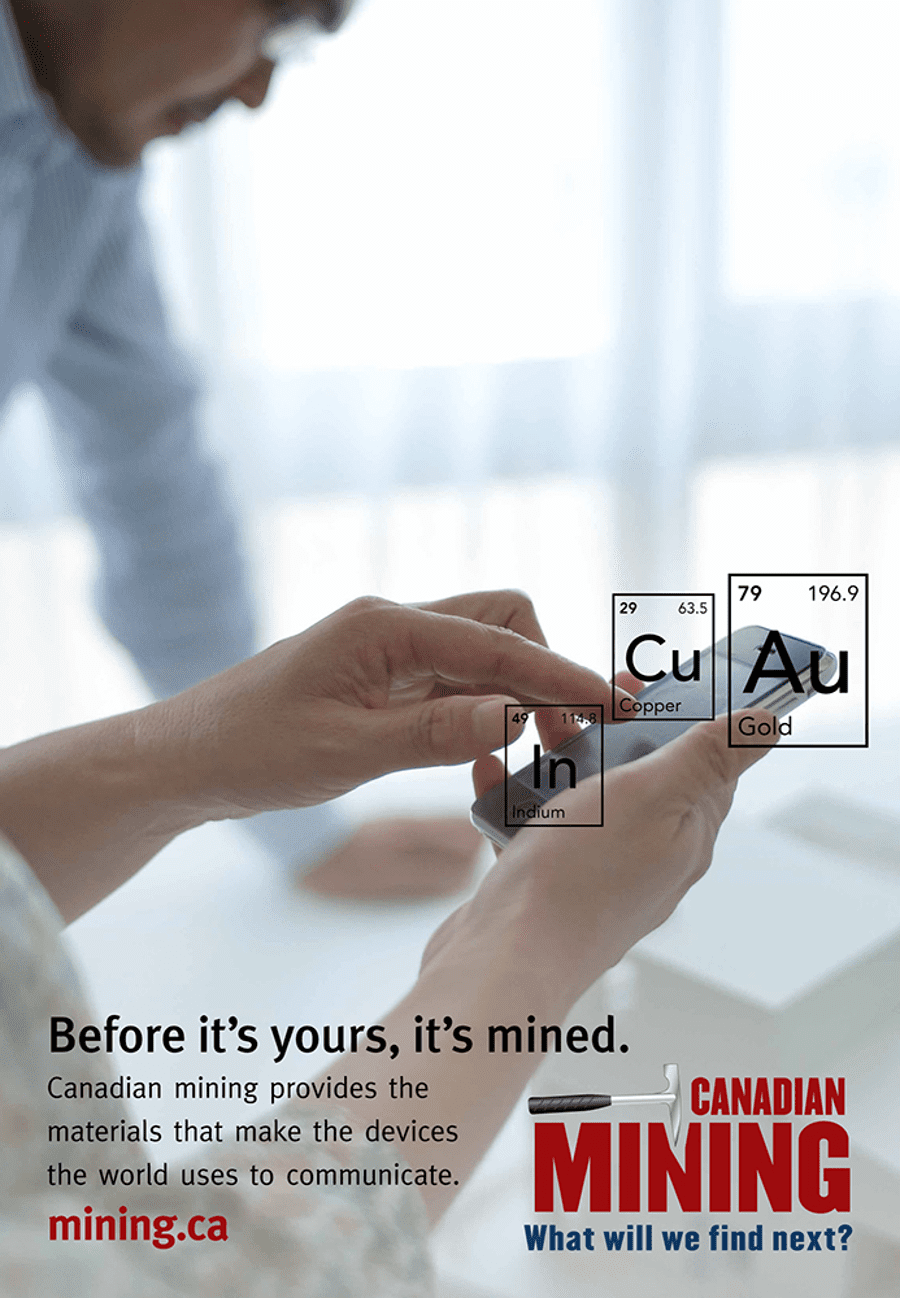Never before in history has technology played such an integral role in our daily lives.
From Zoom meetings on our iPads, to multi-monitor at-home workstations, to celebrating a holiday with our loved ones through a screen, our devices are our access to the world.
Canadian mining provides the materials that make the devices the world uses to communicate.
In 2019, Canada mined over 577,000 metric tons of Copper. Many of the largest Copper mines in Canada, such as Teck’s Highland Valley Copper and Newcrest/ Imperial Metal’s Red Chris mine, are located in BC .
Copper is used in computer chips, car batteries, and electrical wire. A smartphone handset consists of approximately 40% metals, predominantly copper, gold, platinum, silver and tungsten.
Gold is mined in 9 Canadian provinces and territories, and is the highest valued commodity produced in Canada by value of production. Demand for gold production continues to grow each year.
Most gold is used for jewelry making, but approximately 7.6% of the demand for gold is for use in technology applications, mostly as a component of microcircuitry in a range of electronic products. Gold is also an essential element used in health care treatments and applications, including cancer treatment and rheumatoid arthritis treatment.
Indium is “the everyday metal you never see”. According to the USGS, Canada is one of the top six producers of indium in the world. In fact, Teck is a key contributor as one of the largest single source producers of indium in the world.
So what is Indium used in? This is best explained by a US publication, Mining News North:
“If you are reading this article on your computer, tablet or phone, you are almost certainly looking through indium, and if that devise happens to be a touchscreen, you have the unique properties of this critical mineral to thank as you scroll down to read more about indium and where it can be found in Alaska.
This is because indium-tin oxide is used as a transparent conducting film applied to virtually every flat-panel display and touchscreen on the market. This thin coating transforms incoming electrical data into an optical form.
When it comes to the combination of characteristics required for this widely used application – transparency; electrical conductivity; strong adherence to glass; corrosion resistance; and chemical and mechanical stability – indium-tin oxide has no equal.”
